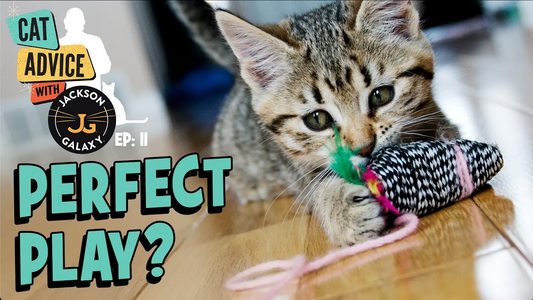While writing my new book, Total Cat Mojo, I encountered a pretty big roadblock when it came to encapsulating what I know about litter box problems(and one that I run into when explaining to clients): There is no stock, one-size-fits-all solution to these issues. They are like pee and poop-shaped snowflakes, as individual as the cat themselves. That said, every snowflake comes from the same set of clouds, so with that, I started with my Ten Litter Box Commandments: basic guidelines that serve as a starting point for your problem-solving detectivism.
This four-part series is a condensed rundown of what I discuss in the book. And remember, adherence to even one of these ideas may be just what it takes to find a solution for any of your“outside the box” issues.
Let’s start with:
The Multiple-Box Solution
Always Have One Box Per Cat + 1
The“Plus One Formula” is a guideline that I strongly recommend you consider. It states that there should be one litter box for every cat in the house—plus one extra. If you have one cat, you’ll want two litter boxes; two cats, three litter boxes, and so forth. This formula is there to gently push you back into right-sized thinking.
Make Sure There are Multiple, Well-Placed Stations
When I return to a client’s home after having given them the above formula as homework, I often come back to a home that still seems curiously devoid of litter boxes, at least at first glance. That’s when the client takes me to the garage, where four litter boxes are put side by side, creating not four litter boxes but one huge“litter station.” Welcome to the hidden resort of Litter Beach, tucked privately away from the hustle and bustle of the home. Nice try, box hater!
Litter boxes define territory, and every box should serve its purpose as a signpost by being placed in different locations in the home. Think of it as having multiple door mats. You wouldn’t stack them all at your front door. You would have one for each door—front, back, and side—so they could serve their purpose as a sign of welcome to others, and a signpost for you.
Which brings us to: Location, location, location!
You put the litter box in the garage, the mudroom, or the laundry room because you don’t want to watch your cat poop and pee, and you don’t even want to be reminded that they do so in your house. Or you just don’t want to have a litter box or three destroying the appearance of a beautifully designed home. In the meantime, you might be asking your cat to walk down two flights of stairs, through a cat flap, and across the cold garage floor to a small, covered box on the outskirts of his territory. It’s the equivalent of an outhouse—not convenient, not desirable, and if you had any choice, you’d find a way to avoid it.
There are other significant drawbacks as well. In these types of locations, opening the garage door or starting the washing machine will startle your cat. The potential upshot of that scenario is that your cat might think that bad things happen when they go to the litter box—so . . . he stops going to the litter box.
So, I repeat: location, location, location!
The box should be located where it works best for your cat, not you. Think of it as the lesser of two evils. It’s either a litter box where you don’t want it, or pee where you definitely don’t want it.
______________
In Part Two, we’ll discuss a few“cleanliness is next to godliness” strategies for keeping those litter boxes clean and comfortable for your cat.
To get the full text of the Ten Litter Box Commandments, pick up a copy of Total Cat Mojo here, or at your local bookstore.













